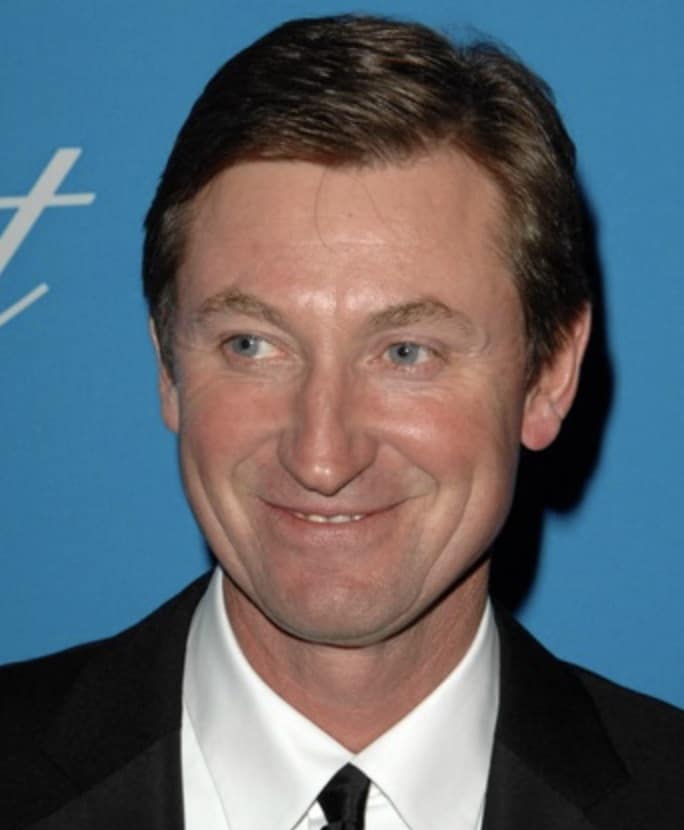
Wayne Douglas Gretzky was born in Brantford, Ontario, Canada on January 26, 1961 to Walter and Phyllis Gretzky. In Empowerment: The Competitive Edge in Sports, Business and Life, Gene Landrum describes Wayne’s early life:
Wayne began skating at age two on the frozen Nith River that flowed through his grandparents’ farm. However, it was on the backyard ice rink built by his father, Walter Gretzky, where he honed the skills that led him to the National Hockey League (NHL). Explaining why he made this ice rink, later dubbed “Wally Coliseum,” the proud father said, “I didn’t flood the backyard to build a hockey star. I flooded it so I could watch from the kitchen, where it was warm.” Walter Gretzky had tired of the countless frigid winter nights, shivering on the peripheries of public outdoor rinks to accommodate Wayne’s pleas for just a few more minutes of ice time. Direct access to the Wally Coliseum through the back door at 42 Varadi Avenue enabled young Wayne to live his first winters on skates, eat his meals without removing his skates, and return to the ice without missing a shot. A backyard light, supported by another in the neighbor’s yard, extended the ice time into the late evening. Plastic Javex bleach containers served as pylons around which Wayne could skate with the puck to develop his stick-handling skills. Wally Coliseum seemed to be the focal point of Varadi Avenue where all the neighborhood boys acted out their fantasies of playing in the NHL and winning the Stanley Cup before millions of cheering fans. Canadians have always embraced hockey as part of their identity and hockey superstars as their royalty.
When Wayne was 6 years old, Walter encouraged his son to try out for a team in the Atom League that was organized for boys of age 10. Wayne made the team and within a year, he began to set new records in goal scoring. By age 11, Wayne was receiving national attention for his goal-scoring ability. During his teen years, he continued to move upward in the leagues, competing with those who were three or four years older. At the age of 18, Wayne signed a contract with the Edmonton Oilers of the WHA (World Hockey Association) and in his first year with the Oilers was third in scoring and won the Rookie of the Year award.
In 1979, when the WHA dissolved, the Oilers team joined the NHL and Wayne’s dream to become a player in the NHL became a reality. The following year, he won his first Hart Trophy–the NHL’s MVP award. Gretzky would go on to win this trophy eight more times. In 1981, he won the Art Ross Trophy as the NHL scoring champion–a feat he would repeat nine times. During his NHL career, Wayne Gretzky earned the moniker “The Great One,” and became widely regarded as the greatest hockey player in history. He holds numerous records, including the most career goals (894) and assists (1,963) in the NHL, and in 1982 Sports Illustrated named him “Athlete of the Year.”
Peter Gzowski, a writer who had been a close acquaintance of Wayne’s from early in the hockey star’s career, wrote about his research-based theory on what made Gretzky exceptional (Total Gretzky, p. 10):
At the core of my discoveries…was the realization that what set Wayne apart from his peers, and indeed, perhaps even from the dominant players who had preceded him, was not his physical gifts…and not even his visual talents–or not as we usually understand that phrase.
Instead, his mastery was a matter of perception…Where most players saw an assortment of individuals, both teammates and opponents, Wayne saw situations…[Like a grand master of chess], Wayne was a grand master of hockey: one glance around and his mind told him not only where people were but what they were likely to do next. That’s why, I figured from my studies, he always made so many passes to apparently open spaces only to have a teammate suddenly appear in position to gather them in.
In a historic and surprising move, Gretzky was traded to the Los Angeles Kings in 1988. His presence helped popularize hockey in non-traditional markets in the United States. Then, in 1996, after a brief stint with the St. Louis Blues, he signed on with the New York Rangers. In 1999, the world’s greatest hockey player whose sweater number was 99, retired and was immediately inducted into the Hockey Hall of Fame.
After his playing career, Gretzky ventured into coaching and team ownership. He coached the Phoenix Coyotes from 2005 to 2009 and was briefly involved in the ownership of the team. Gretzky has been involved in various business endeavors, including endorsements, a restaurant chain, and a brand of wines from the Niagara region.
Wayne Gretzky’s significant contribution as an ambassador for the sport of hockey is indisputable. Perhaps, even more lasting is the awareness he has brought to the role of the mind in athletics. Supreme athletic performance transcends mere physicality and demands a subtle interaction of mind and body. In 1994, after Russian coach Tarasov watched Gretzky play, he told the press, “He is the only player who can play the game above the ice level. He sees things before they happen. If he were playing chess he would be a grand master.”
